Supply chain sustainability in practice: How to get the data right
Supply chains play a significant role in the environmental impact of any company. Emissions from transportation, energy use, and production processes contribute to climate change and other environmental challenges. As a result, companies are under increasing pressure to reduce their environmental footprint and make their supply chains more sustainable.
However, achieving sustainability in supply chains is easier said than done. Supply chains are complex and involve multiple stakeholders, making it challenging to collect and analyze data on emissions and sustainability performance.
In this article, we will discuss how companies can get the data right and make their supply chains more sustainable. We will examine the core emission data issue for supply chains across companies, and explore how companies can gain “Deep Transparency” in their emission data across all three scopes.
We will also discuss how to get the right data to link it to your operating model and supply chain planning.
Let’s get started.
The core emission data issue for supply chains across companies
In recent years, there has been a growing awareness of the environmental impact of supply chains. As a result, companies are starting to take action to reduce their carbon footprint and address sustainability concerns. However, one of the core challenges facing many companies is the lack of complete and accurate emission data across all three scopes of their supply chains.
Most companies have data on their Scope 1 and 2 emissions. These are the direct emissions from their operations and indirect emissions from their energy consumption, respectively. Unfortunately, Scope 3 is usually where the largest emissions are buried. And Scope 3 data is much harder to get, and consequently not available at many companies.
If companies have Scope 3 data, it is generally only high level, aggregated data that does not provide the necessary level of detail to make operational decisions.
This lack of data is a problem because it is not easy to operationalize high-level data in the supply chain planning process. To truly drive sustainability improvements, companies need to understand the specific emissions associated with each product and service they offer, as well as the emissions generated by their suppliers and customers.
Detailed data is essential for reducing emissions
Consider a company that manufactures and distributes packaged goods.
The company might have a general idea of the emissions associated with their manufacturing and transportation processes, but they might not have a clear understanding of the emissions generated by the production of the raw materials they use or the disposal of their packaging by end customers.
Without this level of detail, it is difficult to identify specific areas where emissions can be reduced and to develop targeted sustainability initiatives. It also makes it challenging to set meaningful sustainability goals and track progress towards those goals over time.
To overcome this challenge, companies need to gain what we call “Deep Transparency”. Deep transparency is basically a thorough understanding of emissions at the lowest possible level in your supply chain.
Acquiring low level emission data, however, is much easier said than done.
When we change something from going by air to go by sea, it will increase the lead time. That means the safety stocks that we need will increase.
Consequently, the working capital requirements will increase, but by how much?
-Benjamin Obling
COO, PERITO IBP and partner at Roima Intelligence
How to gain “Deep Transparency” in you emission data across all three scopes
The primary challenge for supply chain professionals is to gather data from various sources, both internal and external, to calculate emissions across all three scopes. For most companies, the place to begin would be something as “simple” as identifying their data sources.
For scope 1 and 2 emission data, the two primary sources are internal ERP systems and external databases.
The ERP system contain a lot of information, such as:
- Where the product is coming from
- Where it is going
- The means of transportation
- The components used in the product.
External databases provide information on emissions per unit for various activities, for example emissions from one kilometer flown or one kile of steel.
Now, the database emission data can be linked to the ERP system’s bill of material to determine the emissions for each finished product. As a company, you can also identify which customers are using the finished products, allowing you to link emissions to specific customers.
This would be the way forward for calculating emissions on scopes 1 and 2. Calculating emissions for scope 3 is more complex.
It requires data from external sources, such as transportation companies, suppliers, and customers. This data must be collected and analyzed to identify emissions hotspots, which are areas where emissions can be reduced the most. Companies can use life cycle assessments to identify these hotspots and prioritize their emissions reduction efforts.
Acquiring scope 3 data is a much bigger task, but not the least important. As supply chain manager, you can ask your team to identify the core emitting processes based on their assumptions, as this will provide you with a place to begin collecting real data. Prioritise your data collection where you expect the largest impact of a potential transformation or where you expect to find low-hanging fruits.
Only when you begin to have detailed emission data, you can identify opportunities to reduce emissions in your supply chain and achieve your sustainability goals.
How to get the right data to link it to your operating model and supply chain planning
Now that we understand the sources of emission data, the next challenge is to link that data to the operating model and supply chain planning.
Step 1: Understand the supply chain impacts of initiatives
The first step is to understand what the sustainability targets are and how they relate to the supply chain. For example, if the target is to reduce CO2 emissions by a certain percentage, what does that mean for the supply chain operations? How will the target impact transportation modes, lead times, working capital, and other critical factors?
“When we change something from going by air to go by sea, it will increase the lead time. That means the safety stocks that we need will increase. Consequently, the working capital requirements will increase, but by how much? We will also have more stock in transit and that will hurt our working capital – but how much?” Benjamin Obling points out. Obling is COO, PERITO IBP and partner at Roima Intelligence.
It is essential to have a clear understanding of how sustainability targets relate to the supply chain, so the right data (as discussed earlier) can be gathered.
Step 2: Link data to your operating model
Once we have the data, we need to link it to the operating model and supply chain planning.
One way to do this is through simulation. We can simulate the impact of different sustainability initiatives on the supply chain and compare them with the baseline.
“If we are considering shifting from air to sea transportation to reduce CO2 emissions, we can simulate the impact of this shift on lead times, safety stocks, and working capital. We can then compare this impact with the baseline to see if the shift is feasible and profitable,” Obling explains.
Simulation can also help us prioritize sustainability initiatives. We can simulate the impact of different initiatives on the supply chain and rank them based on their impact on CO2 emissions, profitability, and other critical factors. This will help us choose the most feasible and profitable initiatives to implement.
Step 3: Align expectations across your organisation
Finally, it is important to have open communication and collaboration across different departments and stakeholders.
Supply chain planning is not done in isolation, and sustainability targets should be aligned with the overall business goals. The sustainability department, finance department, and other stakeholders should be involved in the planning process, so the impact of sustainability initiatives on the entire business can be evaluated.
This will help ensure that the right initiatives are implemented, and sustainability targets are met without sacrificing critical service level agreements, profitability, or customer success.
In conclusion, supply chain sustainability requires a holistic approach that integrates emissions data into all aspects of business operations.
Companies that prioritize deep transparency, collaboration, and simulation in their sustainability efforts will be better positioned to meet sustainability targets while maintaining critical business metrics.
As we move towards a more sustainable future, it is imperative that companies prioritize sustainability in their supply chain planning and operations.
-
Perito
PERITO IBP
Additional text for product card: Integrated Business Planning-løsning, designet til at hjælpe dig med at navigere i hastige ændringer i din virksomhed og profitabelt styre din forsyningskæde.













